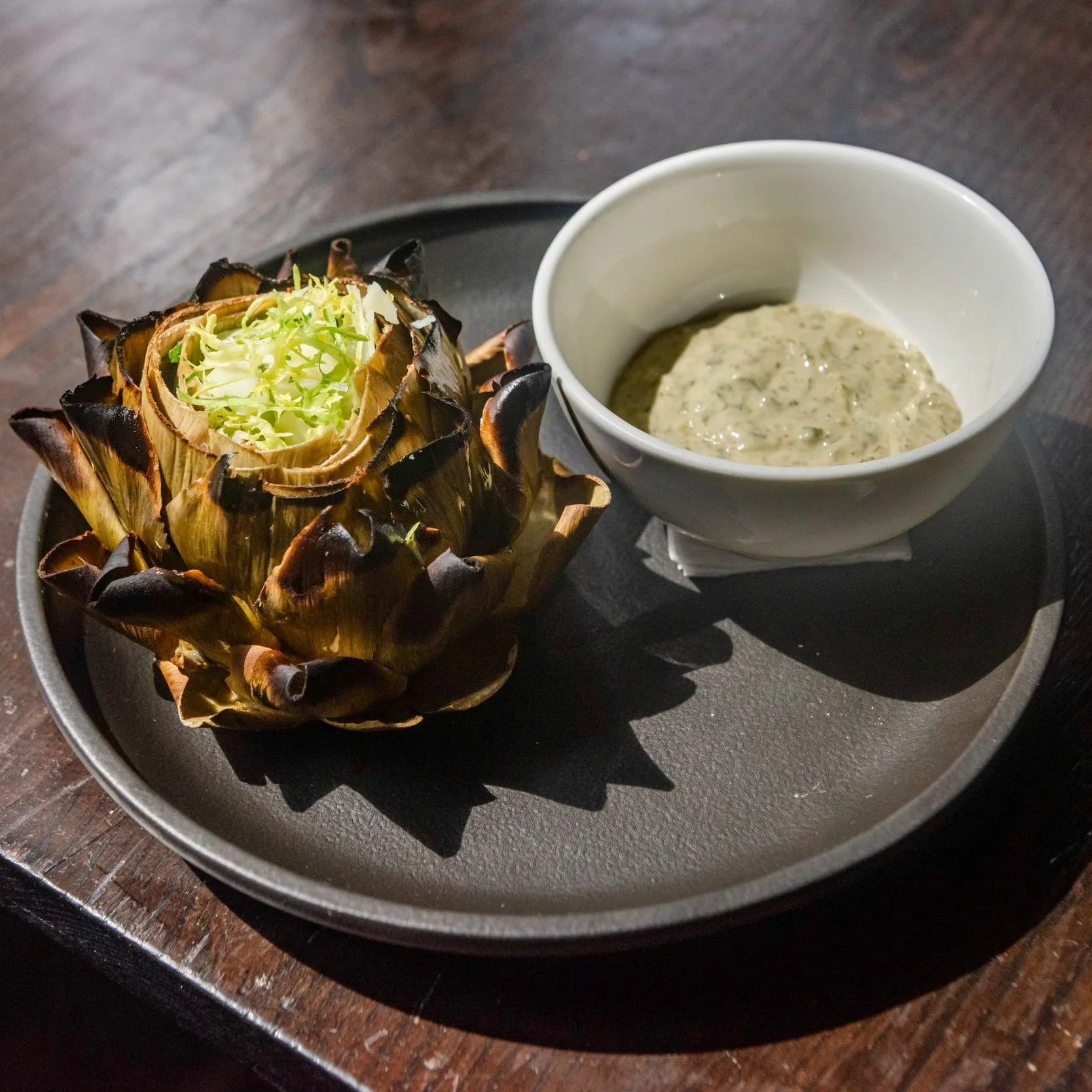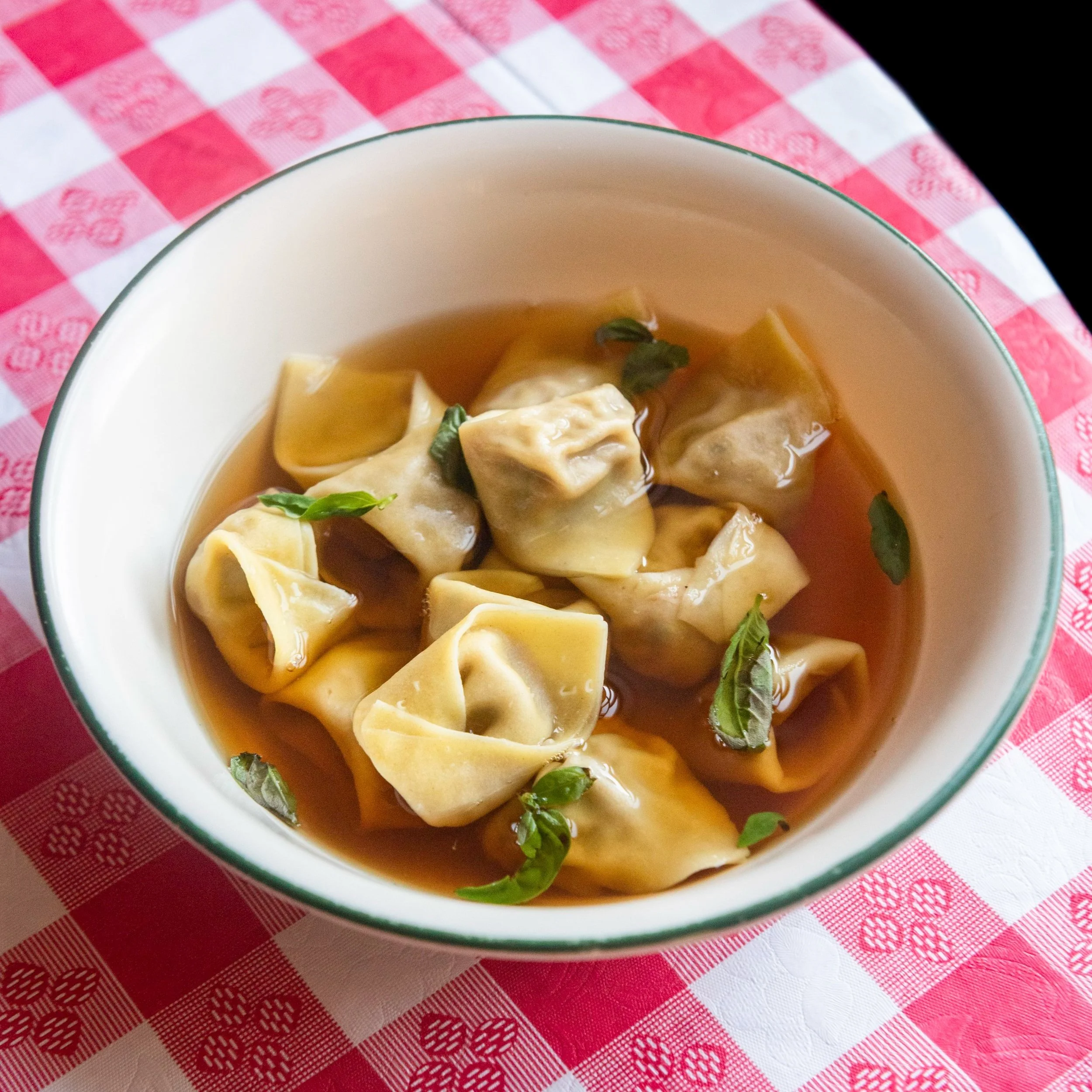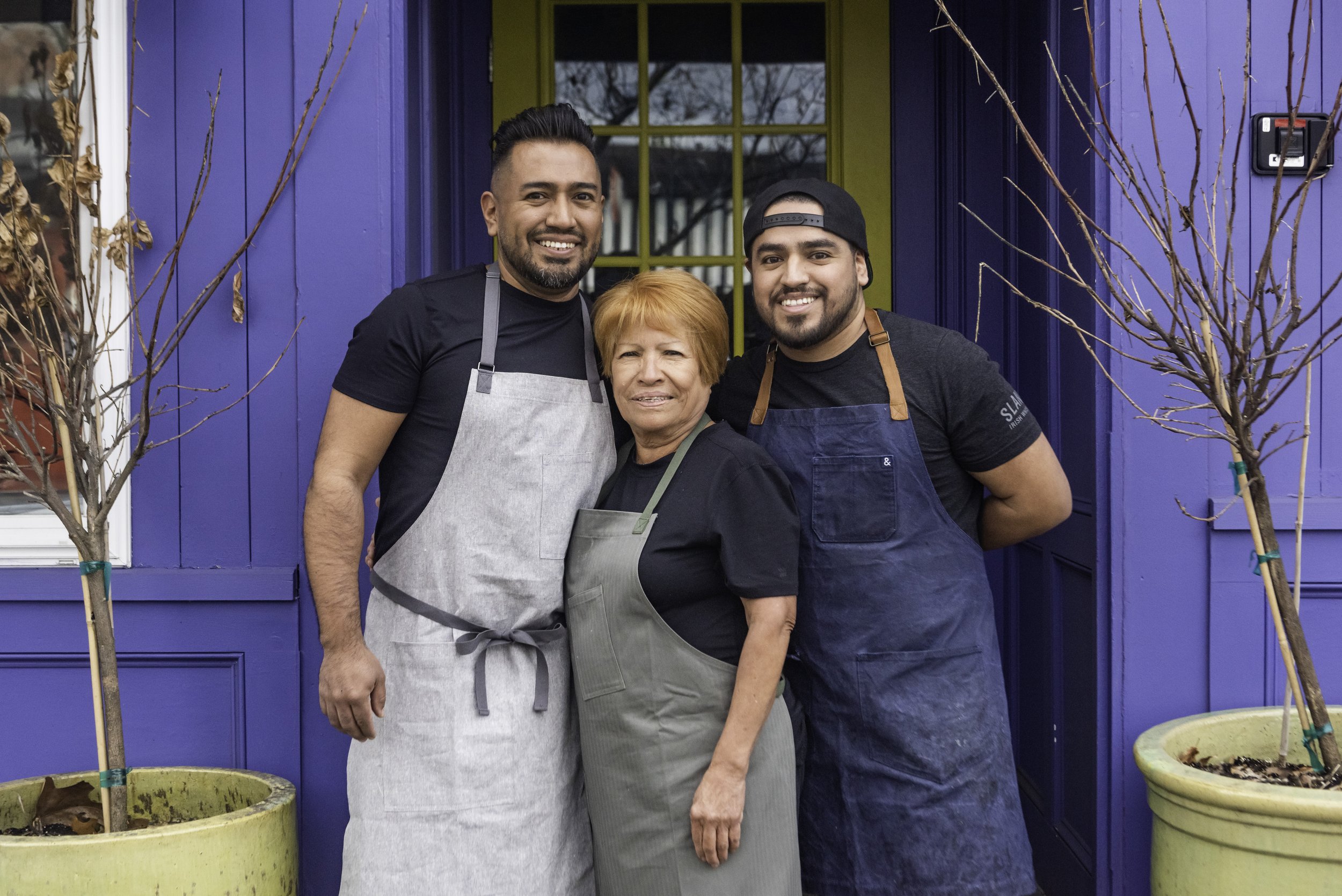Menuing Memories
Take a peek behind the culinary curtain: how Philadelphia chefs are putting their personal stories on the plate.
Inspiration can come from anywhere, but it seems that nothing is stronger than the creativity sparked from memories. Whether they draw inspiration from travel, family, or childhood, chefs across Philadelphia have found ways to adapt and evolve the dishes of their past while reflecting their cultural present.
REUBY
At Reuby, Chef Reuben Asaram’s Asian-Mexican pop-up, the dishes blend the flavors of Asaram's childhood with those he picked up along his global travels. Menu items, like his Reubychanga, incorporate techniques and ingredients from both his Indian upbringing and his later-in-life exploration of Mexico’s cultural and culinary mainstays. His trip to Mexico, in particular, kick-started the ethos behind many of the dishes at Reuby. “I had an ex-line cook who took me inside Mexico,” says Asaram. “We went to these little towns, learned so much from all the abuelitas and street vendors.” But the moment that spurred Asaram’s creativity was when he was “eating one of the moles and it instantly reminded me of my Indian mother’s curry.” Now, his Reubychanga dish reflects his memories, his culinary heritage, and his contemporary inspirations all at once. The chimichanga starts with tikka-spiced pulled chicken thighs cooked like carnitas with achiote paste. Rather than using basmati rice, which is more traditional, Asaram cooks canilla rice with biryani-esque spices. The chicken and rice is wrapped in a tortilla, fried, and covered with a butter chicken sauce, salsa verde, beet-lime crema, cotija cheese, and Asaram’s vibrant “Papa Smurf” sauce.
Mawn
“Mawn is not a Cambodian restaurant, it's a Cambodian-owned restaurant,” says Chef-Owner Phila Lorn of the South Philadelphia spot. Although many items on the menu are inspired by traditional Cambodian dishes, Lorn infuses his own style into the menu, drawing inspiration from his time working in Japanese restaurants and his childhood in Philadelphia. One of the staples on the menu at Mawn is Prahok. “[It] means fermented mudfish. [Prahok] is very important in our culture because of the fermentation. In a country with a lack of refrigeration, we need to find ways to preserve our food.” Lorn’s Prahok is based on his mother’s recipe, although she doesn’t make it often since “it's a bitch to make.” Prahok is typically served as a condiment, but Lorn chose to mix it up and serves it as a dip (“like a Cambodian chili”). He begins by stewing ground pork in a combination of red curry paste, unfiltered fish sauce, coconut milk, fermented mudfish, and lemongrass for an aromatic, umami-packed dip that he serves alongside crispy cabbage leaves, encouraging guests to scoop it up. “It’s a friendly introduction to something more adventurous later on.”
Vernick Food & Drink
As a kid, Chef Meredith Medoway’s mother was always in the kitchen (“she was a great cook”) and would often serve a favorite of Medoway’s: artichoke. “I love artichoke. It’s an interactive dish! My mom would stuff them and serve them with melted butter on the side for dipping.” Now at Vernick Food & Drink, Medoway always tries to sneak an artichoke dish onto the menu. To pay homage to her mom while still keeping her clientele in mind, she incorporated a whole roasted artichoke into rotation. The artichoke is poached in lemon, white wine, salt, thyme, and bay leaf and is then roasted in the oven for pick-up with a healthy amount of butter to “get the feeling of dipping it in butter.” The heart is removed and stuffed with creamy P'tit Basque cheese and topped with a frisée salad for some crunch. Finally, the artichoke is brushed with more butter (“I love them with a ton of butter”) and served with a lemon-cornichon aïoli for dipping, resulting in a comforting, restaurant-ready version of Medoway’s favorite childhood dish.
Saami Somi
Saami Somi co-owners Donna and Michael Kolodesh opened their Georgian restaurant in Reading Terminal Market to share not only more well-known Georgian dishes, but also “what our mom and grandma would’ve made with an American twist on it.” Emigrating from Georgia and growing up in Northeast Philly, which happens to have a large community from ex-Soviet countries, the siblings pull techniques and flavors from the cultures they grew up around. “We’re neither fully Georgian, nor fully American. We're somewhere in between.” One of their most popular menu items, pkhali, is a traditional dish eaten during a Georgian feast. Pkhalis are typically made with a purée of beetroot, eggplant, or bitter greens that is combined with a mixture of ground toasted walnuts, garlic, and a spice blend called Khmeli Suneli, a combination of fenugreek, thyme, coriander, basil, and dill, to name a few. To change up the format, Michael and Donna thinly slice and char eggplant, forming them into rolls, before stuffing them with the vegetable pastes. The pkhali rolls are then served with a dill labneh. “The technique and the ingredients are pretty true, but the presentation and how we integrate them are different.” Saami Somi also plays with less traditional fillings in their pkhalis, like pumpkin and green bean, and often rotates them out depending on the season.
Doro Bet
At Doro Bet, Chef Mebruka Kane is bringing Ethiopian fried chicken to Philadelphia. Kane creates the menus for Alif Brew and Salam Cafe, which are owned by her sister, but Doro Bet was a creation all her own. “I wanted to do something on my own. I need to cook my culture and what I grew up with.” So, Kane turned to her go-to comfort food, fried chicken. “Doro Bet is not traditional Ethiopian. Fried chicken is not what my community is used to.” To bridge that gap, she incorporates Ethiopian seasonings and ingredients to help familiarize her Ethiopian guests with the menu, which is best showcased through her alicha fried chicken. “Two years ago, we were making fried chicken and I thought, why not use Ethiopian spices?” Kane uses traditional teff flour (a gluten-free grain popular in Ethiopia) for the dredge, along with turmeric and chickpea and tapioca flours for added texture and to help the chicken “stay crispy.” While developing the recipe, Kane also decided to add in lemon for a hint of citrus, which is not often seen in Ethiopian cuisine. “Alicha means mild. This is my favorite [dish] because Ethiopian food is not always spicy.”
CJ&D’s TRENTON TOMATO PIES
For Chef-Owner CJ Volkstro and life and business partner Daria Silvestro, making pizza is a way to preserve a piece of the family history. At CJ & D’s Trenton Tomato Pies, the couple brings the thin-crusted, sauce-on-top pies of Trenton, New Jersey to South Philly. While they were both raised by Italian families in Trenton, the tomato pie history runs particularly deep for Silvestro, whose family founded the first tomato pie shop in 1910, which came to be known as Joe’s Tomato Pies. “It’s part of the culture. It’s a very specific kind of pie,” says Silvestro. To continue the legacy while making the pie their own, Volkstro became obsessed with developing his dough. “There should be crunch, but also chew.” He eventually landed on a low-hydration, three-day fermented dough “for flavor impact but also gluten development.” The Classic Tomato Pie pairs a modest layer of whole milk mozzarella with a blend of California and New Jersey tomatoes. “It’s not a cooked sauce, just raw tomatoes and salt. They are the stars.” The Nonna Pie ditches the cheese and simply complements the tomato sauce with garlic and oregano. “The Nonna is the pie I grew up eating. My mom would buy dough from an Italian bakery for pizza nights, and I have such visceral memories of the smell of dough and garlic throughout the day,” says Volkstro. “Every interaction at the register is a conversation educating people on what Trenton pies are,” says Silvestro. “Especially since my family's place isn't around anymore, it's fun and important to keep that alive.”
Paffuto
Inspired by heritage, memory, and community, Chefs Sam Kalkut, Jake Loeffler, and Daniel Griffiths have taken their favorite dishes from childhood and used all of their “education and experiences in fine dining to further push the food,” says Loeffler. And while collaboration can often be difficult (especially in a kitchen), the chefs discovered early on that “Italian was common ground” for all of them to express themselves on Paffuto’s menu. Their nostalgic tortellini en brodo is a reflection of the trio’s personal and shared experiences. The inspiration came from “eating chicken noodle soup” as kids and “wanting to recreate that comforting flavor profile in an Italian style.” For Loeffler and Griffiths, Sunday dinners with their Italian relatives instilled in them an appreciation and longing for those familiar flavors. And for Kalkut, it was more about paying homage to the dishes he ate around Manhattan with his Jewish grandparents as a kid. The broth is made with roasted pork bones, charred alliums, and a mirepoix, and is then clarified with shallots and lemon juice. The rich, clear brodo—which warms tender tortellini—is black pepper and pork-forward, leaning on the Italian flavors they all grew up eating.













